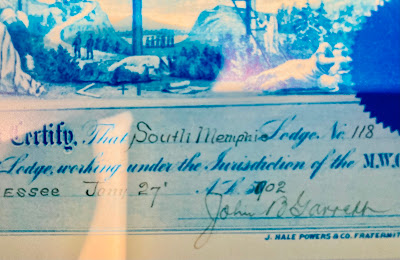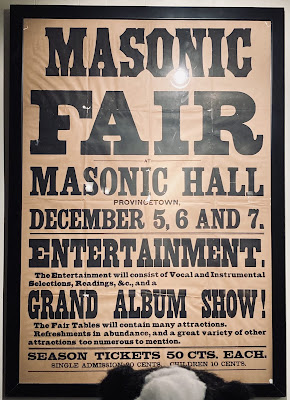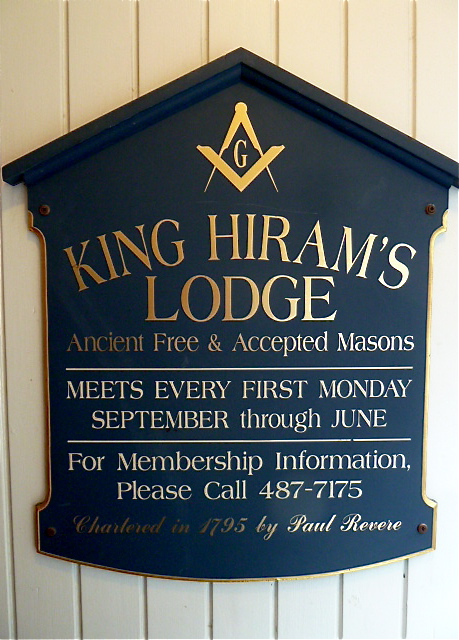To continue from last Tuesday (see post below) about a quick trip to Massachusetts in May, my stay on Cape Cod coincided with the monthly meeting of King Hiram’s Lodge.
As I recall, this was the brethren’s second lodge meeting since the end of COVIDmania. It was obvious they were very grateful for their Masonic labors!
King Hiram’s is a historic lodge. When you’re a Freemason in the eastern United States, it is easy to take for granted the existence of lodges set to labor during the eighteenth century, that even may be older than the country itself, and which have included historic personages in their memberships over the passing centuries. This is one such Craft lodge.
Warranted by Paul Revere in 1795, when he was grand master of the Grand Lodge of Masons in Massachusetts, King Hiram’s Lodge has counted among its members a number of town fathers, a proud tradition that continues today.
While greeting and meeting everybody present that night of Monday, May 3, I shook hands with several local VIPs. The proprietor of one of the historic, renowned restaurants, for one. After the meeting, a few of us grabbed a few drinks around the corner; one of those brethren is Provincetown’s new Town Crier.
This was the lodge’s 2,184th Communication. In its 226 years, King Hiram’s Lodge has not missed a meeting. During the War of 1812, one of His Majesty’s warships blasted the hell out of this tiny town. A ship’s chaplain was sent ashore to enquire about a surrender. During the discussion, it was ascertained that the ship’s captain and others were on the Square. They were invited to attend the lodge’s meeting, and they did so. Even through the COVID-19 scare, a nucleus of devotees kept the Great Lights beaming (and the bills paid).
On the agenda this evening was the reception of RW John Allen Eldredge, the District Deputy Grand Master, who was making his Fraternal Visit. (Other grand lodges term these events Official Visits, or something similarly institutional. Kudos to Massachusetts for this choice of words.) As a fraternal visitor myself, I was invited to join the DDGM’s procession into the lodge room. I tried to talk my way out of it, not knowing if it involved any floor work unfamiliar to me, but the hospitality is strong at King Hiram’s, so in I went, getting a taste of the grand rank life. My rationalization was “Well, why not? I am President of the Masonic Society after all!” Massachusetts also has District Deputy Grand Secretaries and Marshals.
It was a very enjoyable experience. I’m surprised I didn’t snap more photos, but here are the best of what I have:
 |
| Bro. Theodore Roosevelt, President of the United States, used this trowel in the cornerstone ceremony of the Pilgrim Memorial Monument, August 20, 1907. |
 |
| The Pilgrim Memorial Monument. |
 |
| It must be remembered that Paul Revere was a silversmith. He crafted this set of officer jewels for King Hiram’s Lodge. The set is one of eleven known to exist. |
 |
| Edward Horseman (sometimes Horsman) (1775-1819) made these aprons in 1814. |
 |
| I have been hoping to have an apron almost exactly like this made for me for my travels. |
 |
| Tracing board. |
 |
| Altar Bible. |
 |
| Murals in the lodge room. |
 |
| As I get older, I appreciate these lodge officer portraits more. |
Provincetown was my family’s vacation spot during the 1960s and ’70s. I was there in May to scatter my mother’s ashes. I really doubt I’ll ever get there again.
























































































































